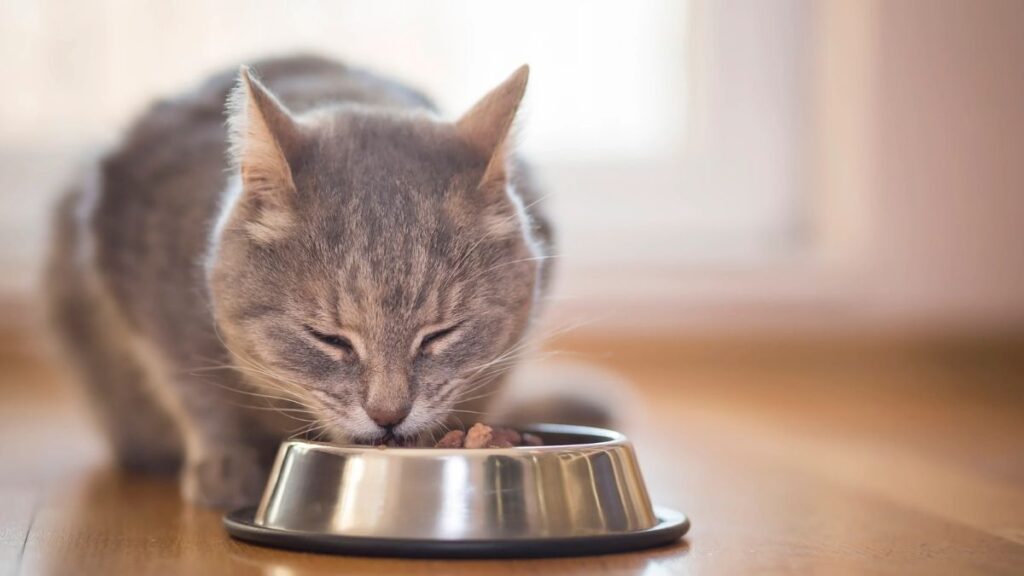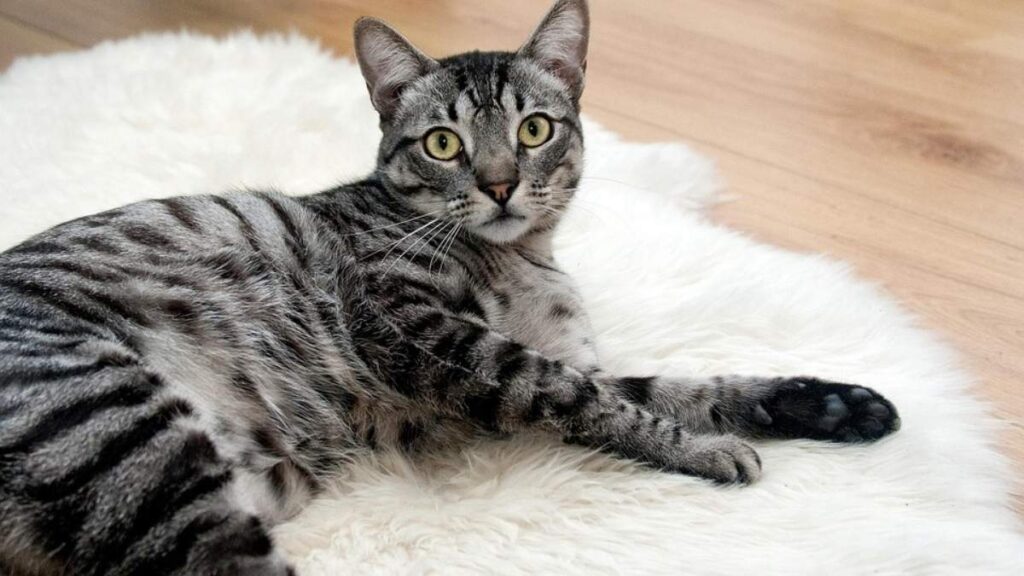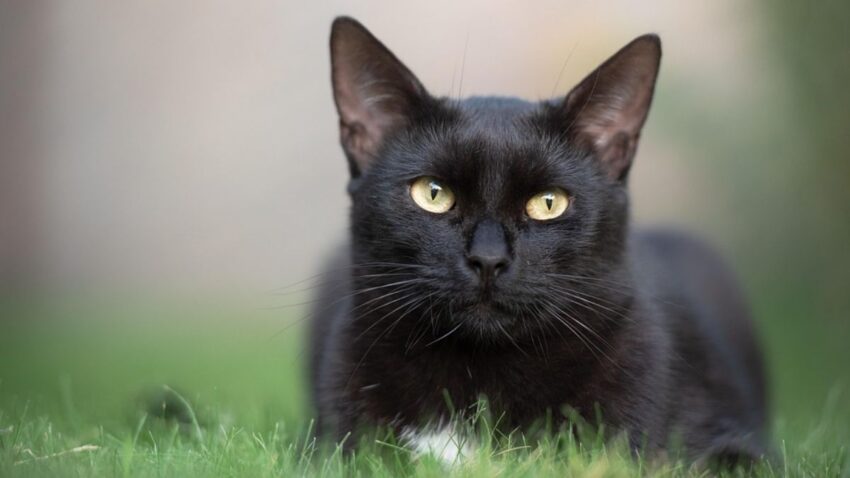Diarrhea in cats can strike suddenly, lasting less than 24 hours in acute cases or persisting for over two weeks in chronic situations. Understanding what to feed a cat with diarrhea becomes crucial during these challenging times, particularly since cats can become dehydrated quickly when experiencing digestive issues.
While many cat owners might consider withholding food from their pets during episodes of diarrhea, this approach can actually be dangerous. Importantly, restricting food intake can lead to hepatic lipidosis, a potentially fatal liver condition. Instead, proper nutrition plays a vital role in helping cats recover from digestive upsets.
Dealing with a kitty tummy upset? This fun, vet-approved guide breaks down the best foods for cats with diarrhea—covering bland diet hacks, portion tips, and smart nutrition choices. Whether it’s a one-time issue or a recurring problem, you’ll find simple, practical ways to help your feline feel better fast!
Contents
Cat Diarrhea and Diet Explained
Understanding the relationship between feline diarrhea and diet requires examining both the condition’s manifestations and its dietary triggers. As a veterinarian who regularly treats digestive issues, knowing what to feed a cat with diarrhea starts with recognizing the specific type they’re experiencing.
Types of diarrhea in cats
Feline diarrhea manifests in several distinct forms:
- Acute diarrhea: Lasting less than 24-48 hours
- Chronic diarrhea: Persisting for two weeks or longer
- Small bowel diarrhea: Originates from the small intestine
- Large bowel diarrhea: Stems from the colon
How diet affects digestive health
The connection between what to feed a cat with diarrhea and their recovery lies in understanding how nutrition impacts their digestive system. Cats possess a unique digestive system that requires specific nutritional components. Furthermore, their gastrointestinal tract houses beneficial bacteria, known as microflora, which play a crucial role in processing food and supporting immune function.
A cat’s digestive health depends heavily on proper nutrition. Consequently, sudden dietary changes often trigger digestive upset. Additionally, cats require certain nutrients found exclusively in animal tissues, including taurine and arachidonic acid. This explains why determining what to feed a cat with diarrhea must account for their carnivorous nature.
Food allergies and sensitivities can develop at any age. Moreover, diagnosing these issues often requires a carefully controlled diet under veterinary supervision. The digestive system’s response to food depends on several factors, including protein digestibility, fat content, and fiber balance.
For optimal digestive health, cats need a precise balance of nutrients. This includes high-quality protein for cell regeneration, carefully measured fats for energy, and specific fiber types that support gut health. Both soluble and insoluble fibers contribute differently to digestive function – insoluble fiber aids in regular gut movement, whereas soluble fiber helps regulate digestive speed.
What to Feed a Cat with Diarrhea Immediately

Proper nutrition plays a crucial role in managing what to feed a cat with diarrhea. Contrary to common belief, cats should not be deprived of food during digestive issues.
Safe food options for the first 24 hours
When determining what to feed a cat with diarrhea, maintaining proper nutrition becomes essential for intestinal healing. A simplified diet helps manage cat diarrhea treatment effectively. If a recent diet change triggered the condition, returning to the previous food might resolve the issue.
For immediate relief, plain, boiled, boneless, skinless chicken mixed with rice serves as an ideal food for cats with diarrhea. Specifically, offer small portions – about one to two tablespoons every hour initially. After several hours without worsening symptoms, the portion size can be gradually increased.
Foods to avoid during diarrhea
What to feed cat with diarrhea becomes clearer when understanding which foods to avoid. Here are foods that can worsen diarrhea:
- Rich or fatty meats (turkey, ham)
- Foods containing onion or garlic powder
- Raw or undercooked meat
- Dairy products
- Bones from any source
Proper portion sizes and feeding frequency
The feeding schedule notably impacts recovery when considering what to feed a cat with diarrhea. Small, frequent meals work better than large portions. Accordingly, divide the daily food amount into 4-8 smaller servings.
Water availability remains paramount throughout the recovery process. Place multiple water bowls throughout the home to encourage hydration. If using dry food, avoid moistening it as this can reduce its dental health benefits.
For optimal recovery, maintain consistent portion sizes based on your cat’s weight and activity level. As a general guideline, a 4kg adult cat typically requires around 200g of prepared food daily, divided into smaller meals. However, during diarrhea episodes, smaller portions that the sensitive gut can handle prove more beneficial than larger amounts.
Primarily focus on providing easily digestible proteins. If commercial cat food is preferred, look for options containing novel protein sources or veterinary-prescribed diets designed for sensitive stomachs. Remember to introduce any new food gradually to prevent further digestive upset.
Transitioning to Recovery Foods
After managing the immediate dietary needs of a cat with diarrhea, determining what to feed a cat with diarrhea in the recovery phase becomes essential. The transition process requires careful attention and gradual changes to prevent digestive setbacks.
Bland diet options
Traditional bland diets have evolved beyond simple chicken and rice combinations. Therefore, when considering what to feed a cat with diarrhea, veterinarians now recommend more complete nutritional options for cat diarrhea treatment. The outdated “bland” approach often lacks essential nutrients, making it unsuitable for extended use.
Modern food for cats with diarrhea includes veterinary-prescribed gastrointestinal diets that offer several advantages over homemade options. These specialized diets contain precise nutrient ratios and are easier to measure, ensuring consistent calorie intake throughout recovery.
What to feed cat with diarrhea depends on monitoring specific signs during the transition period:
- Changes in eating habits or appetite
- Recurrence of vomiting or diarrhea
- Energy levels and overall behavior
- Stool consistency improvements
Adding fiber-rich foods gradually
Subsequently, introducing fiber-rich foods becomes crucial in the recovery process. Soluble fiber proves particularly beneficial as it absorbs excess water in the intestines, helping solidify loose stools. Altogether, fiber serves multiple functions in supporting digestive health.
The introduction of fiber should occur gradually over 7-10 days. This careful approach allows the digestive system to adapt while minimizing the risk of setbacks. For cats with ongoing sensitivity, the transition period might extend beyond two weeks.
Fiber-rich options support recovery by promoting beneficial gut bacteria growth and improving overall colon function. Cats with chronic conditions often benefit from specific fiber types – soluble fiber helps with diarrhea management, while insoluble fiber aids in maintaining regular digestive function.
Throughout the transition, maintaining proper hydration remains vital. Cats should have access to fresh water, especially when increasing fiber intake. If digestive issues persist or worsen during the transition, returning to the previous well-tolerated amount for several days before proceeding proves beneficial.
Homemade Food Options for Cats with Diarrhea
Preparing homemade meals offers a controlled approach to what to feed a cat with diarrhea. As a veterinarian, I often recommend specific recipes that provide gentle nutrition while supporting digestive health.
Simple chicken and rice recipe
Food for cats with diarrhea starts with basic ingredients. Primarily, select fresh, skinless chicken breast and white rice. The preparation method significantly impacts digestibility. Begin by cooking the chicken thoroughly until no pink remains. Alternatively, use turkey as a protein source, ensuring it remains unseasoned.
For optimal results, follow these proportions:
- 1 cup cooked, shredded chicken
- 1/4 cup cooked white rice
- 1 teaspoon fish oil (optional)
Bone broth preparation
Bone broth serves as an excellent cat diarrhea treatment option, offering both hydration and nutrients. Indeed, this nutrient-rich liquid contains collagen and amino acids that support digestive health.
To prepare bone broth:
- Use 1-2 pounds of unseasoned bones
- Add 6-8 cups of water
- Simmer for 8 hours minimum
- Strain thoroughly and cool completely
The broth stays fresh in the refrigerator for up to a week. Similarly, freezing extends storage time to three months.
Safety guidelines for homemade foods
When considering what to feed a cat with diarrhea, safety becomes paramount. These guidelines ensure proper food preparation:
- Never add seasonings, onions, or garlic
- Store prepared meals in airtight containers
- Maintain temperature at or below 40°F (4°C) for storage
- Discard any unused portions after three days
- Avoid raw ingredients due to bacterial risks
What to feed cat with diarrhea requires careful attention to food safety. Likewise, proper handling and storage significantly impact the meal’s safety. Although homemade options provide control over ingredients, maintaining proper hygiene remains crucial.
For optimal results, prepare small batches rather than large quantities. This approach ensures freshness and reduces the risk of bacterial growth. Nevertheless, always monitor your cat’s response to homemade meals and adjust portions accordingly.
Long-term Dietary Solutions

Finding long-term solutions for cats with sensitive stomachs requires careful consideration of both commercial foods and supplements. As a veterinarian, I’ve seen remarkable improvements in cats when their owners select appropriate dietary options for managing what to feed a cat with diarrhea.
Best commercial cat foods for sensitive stomachs
Commercial cat food for sensitive stomachs offers scientifically formulated solutions as cat diarrhea treatment. Primarily, these foods contain highly digestible proteins (L.I.P.) and specific fiber blends that promote optimal stool quality. Royal Canin’s Digestive Care formula, for instance, demonstrates impressive results, with over 95% of cats showing improved stool quality within 10 days.
When selecting what to feed a cat with diarrhea, look for foods containing:
- Single-source protein from chicken or novel proteins
- Prebiotic fiber blends
- Limited ingredients to reduce allergic reactions
- No artificial colors, flavors, or preservatives
Generally, wet cat food proves more beneficial for sensitive stomachs as it provides additional hydration and easier digestion compared to dry alternatives. First, examine the guaranteed analysis on pet food labels, which must meet AAFCO‘s recommended minimum of 26% protein and 9% fat for adult cats.
What to feed cat with diarrhea becomes clearer when understanding quality control measures. Hence, select brands that employ full-time board-certified veterinary nutritionists and maintain strict manufacturing standards. Food for cats with diarrhea should contain muscle meat proteins as the primary ingredient, ensuring essential amino acids for optimal digestion.
Supplements and probiotics
Supplements play a crucial role in supporting digestive health. Probiotics, essentially beneficial bacteria, help restore gut flora balance and improve overall digestive function. These supplements offer multiple benefits:
- Support immune system function
- Help manage diarrhea symptoms
- Reduce flatulence and constipation
- Aid in weight management
- Assist during antibiotic treatment
The most effective probiotic strains for cats include Enterococcus and Bifidobacterium. Soon after starting probiotics, many cats show improvement in digestive health, though results typically become noticeable within two to four weeks.
Omega-3 fatty acids from fish oil serve as powerful anti-inflammatory agents, while fructooligosaccharides act as prebiotics to support beneficial gut bacteria. Moreover, flaxseed provides essential fiber and fatty acids that promote both digestive health and coat condition.
For optimal results, introduce supplements gradually and maintain consistent timing. Mostly, probiotics can be found in various forms – from powders and capsules to specially formulated foods. Third-party testing and quality control measures ensure supplement safety and efficacy.
Regular feeding schedules and avoiding sudden changes in routine promote healthy digestion. Following veterinary guidance remains essential when selecting supplements, as individual cats may respond differently to various formulations. Through proper food selection and supplementation, cats with sensitive stomachs can maintain long-term digestive health and overall well-being.
What To Feed A Cat With Diarrhea Frequently Asked Questions
Are there any commercial cat foods suitable for cats with sensitive stomachs?
Yes, there are specially formulated commercial cat foods for sensitive stomachs. Look for products containing highly digestible proteins, prebiotic fiber blends, and limited ingredients. Wet food is often more beneficial as it provides additional hydration. Always choose foods that meet AAFCO’s nutritional standards.
What to feed a cat with diarrhea and vomiting?
When a cat experiences diarrhea and vomiting, feed a bland, easily digestible diet to avoid further irritation. Offer boiled chicken (unseasoned), plain white rice, or a small amount of canned pumpkin to help firm up stools. Keep your cat hydrated with fresh water and consider adding an electrolyte solution if dehydration is a concern. If symptoms persist for more than 24 hours, consult a vet immediately.
What to feed a nursing cat with diarrhea?
A nursing cat with diarrhea needs nutrient-rich yet gentle food to support both her recovery and milk production. Offer boiled chicken, turkey, or plain white fish with rice to provide protein while being easy on her stomach. Avoid dairy, greasy, or high-fat foods that could worsen her condition. Ensure she drinks plenty of water, as dehydration can affect milk production. If diarrhea lasts more than a day or two, consult a vet to rule out infections or dietary issues.
What to feed a cat with diarrhea homemade options?
Homemade food for a cat with diarrhea should be simple, low-fat, and easy to digest. A good option is boiled chicken or turkey mixed with plain white rice in small portions. Plain canned pumpkin (without spices) can also help firm up stools. Avoid feeding dairy, raw food, or heavily processed treats during this time. Keep your cat hydrated and monitor for improvement over 24–48 hours before returning to a regular diet.
What to feed a cat with diarrhea home remedies?
Some effective home remedies for a cat with diarrhea include plain canned pumpkin, which is high in fiber and helps regulate digestion. Boiled chicken with rice is a safe, mild meal that can soothe an upset stomach. You can also try adding a probiotic supplement to restore gut health. Make sure your cat has constant access to fresh water to prevent dehydration. If diarrhea persists for more than 48 hours, seek veterinary advice.

